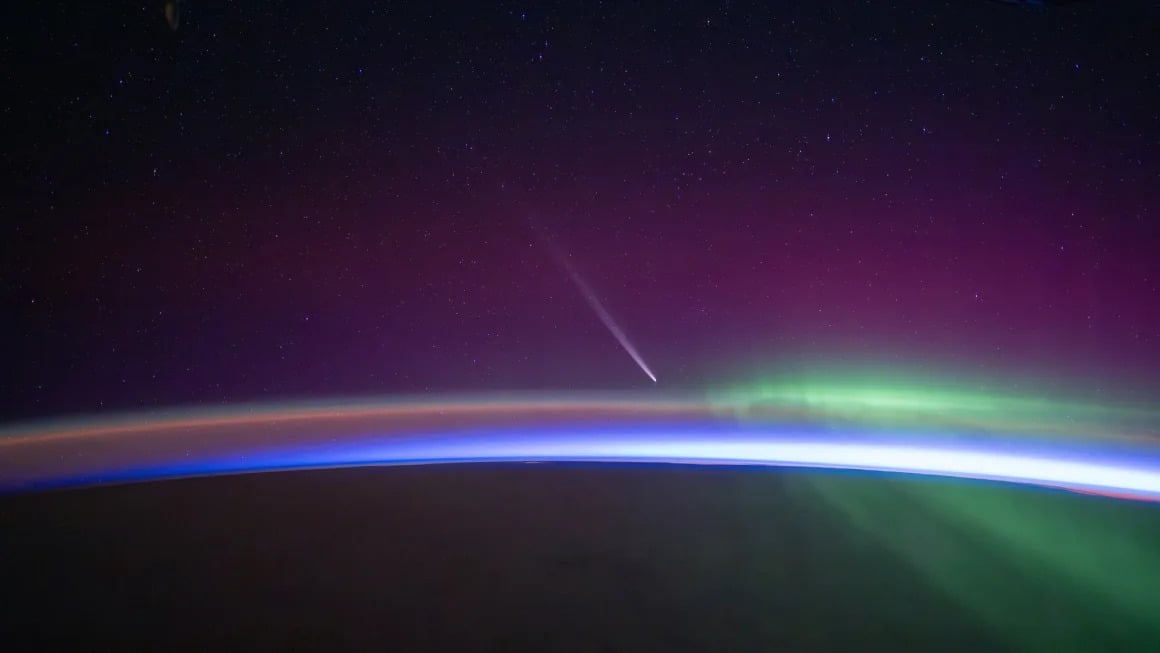The comet successfully reached perihelion, its closest point to the sun in its orbit, on September 27 and was visible in the Southern Hemisphere in September and early October. The icy body is now on its way out of the inner solar system and will be visible in the Northern Hemisphere in mid-October to early November.
On October 12, the comet will come within about 71 million kilometers of Earth. According to NASA, this is the first recorded flyby of the comet. With an orbit of 80,000 years, the celestial body may have last been seen in Earth's skies during the time of Neanderthals.

NASA astronaut Matthew Dominick captured this image of comet C/2023 A3 Tsuchinshan–ATLAS from the International Space Station. Photo: Matthew Dominick/NASA
To catch a glimpse of this once-in-a-lifetime event, observers can look to the western sky just after sunset, according to EarthSky. The comet will look like a bright fireball in the night sky with a trailing tail.
Bill Cooke, head of NASA's Meteorite Environment Office at Marshall Space Flight Center, recommends using a pair of binoculars to get a better look at the comet.
"It won't streak across the sky like a meteor. It'll just hang there, and it'll slowly change position from night to night. If you can see it with the naked eye, using binoculars will be amazing," Cooke said.
According to NASA, Tsuchinshan–ATLAS was discovered by observers in 2023 using China's Tsuchinshan Observatory and the Asteroid Impact Last Alert System (ATLAS) telescope in South Africa, hence the comet's name.
This celestial object comes from the Oort Cloud, "a mostly spherical collection of comets that are nearly unconnected to our Solar System, thousands of times farther from the Sun than we are," said astronomer Dr. Teddy Kareta, a postdoctoral associate at Lowell Observatory.
Because of its proximity to the sun, Tsuchinshan–ATLAS will experience forward scattering, causing the comet to appear brightest around October 9 as sunlight reflects off the comet's gas and debris. But because the sun's glare blocks the comet, it's unlikely to appear in the sky until a few days later.
If all goes well, Tsuchinshan–ATLAS will return to this orbit in about 80,000 years.
For those who can't see Tsuchinshan–ATLAS in the night sky, the Virtual Telescope Project in Italy will host live streams of the comet on October 9 when it is brightest and on October 12 when it is closest to Earth.
Ngoc Anh (according to CNN, NASA)
Source: https://www.congluan.vn/sao-choi-tu-thoi-nguoi-co-dai-sap-thap-sang-bau-troi-dem-post316168.html



































































































Comment (0)